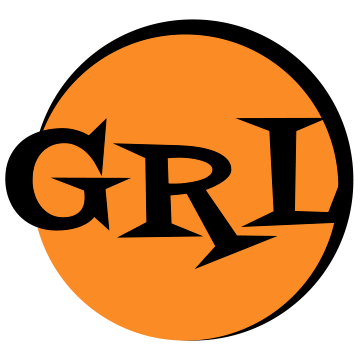| 📝 CompFAQ » Digital Writing | 📖 |
Multimodal Approaches in Technical Writing
The landscape of technical writing has undergone a profound transformation in the digital age. Gone are the days when traditional text-based documents were the primary means of communication. Today, technical writers must embrace a broader and more dynamic approach: multimodality.
Multimodality, in the context of writing, refers to the integration of multiple modes or channels of communication to convey information effectively. These modes can include text, images, graphics, audio, video, and interactive elements—what we traditionally refer to as “multimedia.” Unlike traditional writing, which relies predominantly on textual communication, multimodal compositions harness the power of various media to create a more engaging and comprehensive experience for the audience.
Multimodality Theory
To comprehend the theoretical underpinnings of multimodality, we turn to scholars like Gunther Kress and Theo van Leeuwen, who have laid the groundwork for understanding how meaning is constructed across different modes. Kress and van Leeuwen’s Reading Images: The Grammar of Visual Design elucidates the principles of visual communication, highlighting the importance of visual grammar in conveying complex ideas.[1] They argue that just as written or spoken language has its grammar and rules for conveying meaning, visual elements also have their own grammar, which they refer to as “visual grammar.” They propose that visual elements follow a set of grammatical rules and conventions that govern how meaning is constructed visually. For example, the positioning of elements within an image can convey relationships, emphasis, or hierarchy, just as word order in a sentence affects the meaning of the text. Visual grammar is particularly adept at conveying complex ideas, especially those that may be challenging to express solely through words. Visuals can simplify, clarify, and enhance the comprehension of intricate concepts.
Another significant theoretical framework is Roland Barthes’ concept of “multimodal text,” which emphasizes the interplay of signs and codes within a text, including linguistic and non-linguistic elements.[2] Barthes’ ideas encourage us to recognize that meaning is not solely confined to words but emerges from the interaction of various semiotic resources.
Practical Applications of Multimodality
The practical application of multimodality in technical writing is multifaceted. It is imperative to consider the following aspects when incorporating multimodal elements into digital documents:
Accessibility: Multimodal documents can enhance accessibility by catering to diverse learning styles and abilities. For instance, providing both textual descriptions and visual representations ensures that information is accessible to individuals with different needs.
Engagement: In the digital age, where attention spans are dwindling, multimodal content has the advantage of capturing and sustaining readers’ interest. Combining text with images, videos, and interactive features can create a more engaging user experience.
Clarity and Comprehension: Complex technical information can be made more accessible through the use of visuals. Diagrams, charts, and infographics can clarify concepts that may be challenging to grasp through text alone.
Persuasion: Multimodal elements can be used strategically to persuade and influence the audience. The combination of compelling visuals and persuasive text can be a potent tool in marketing and technical communication.
Methodology of Multimodal Writing
To effectively implement a multimodal approach, technical writers must follow a systematic methodology. The following steps provide a structured process for creating multimodal documents:
Audience Analysis: Begin by understanding the needs, preferences, and expectations of your target audience. This analysis should inform the selection of appropriate modes and media.
Mode Selection: Choose the modes of communication that best suit the content and the audience. Consider whether text, images, audio, video, or interactive elements will convey the information most effectively.
Integration: Seamlessly integrate different modes into the document, ensuring they complement each other and contribute to the overall message. Each mode should have a specific purpose and should not duplicate information unnecessarily.
Consistency: Maintain consistency in design, style, and messaging across all modes to provide a coherent and unified user experience.
Testing and Feedback: Conduct usability testing to gather feedback from the audience. This iterative process helps identify any issues or areas for improvement in the multimodal document.
Examples of Multimodal Digital Writing
To illustrate the application of multimodality in technical writing, let’s explore a few examples:
User Manuals: Modern user manuals often include not only textual instructions but also visual diagrams, videos demonstrating product usage, and interactive troubleshooting guides.
Educational Tutorials: Online educational platforms frequently employ multimodal techniques, combining text with animations, quizzes, and audio narration to enhance learning experiences.
Scientific Reports: In scientific research, conveying complex data is made easier with the integration of graphs, charts, and images alongside traditional textual explanations.
Technical Documentation: Software manuals now incorporate screenshots, videos, and tooltips to guide users through the interface and troubleshooting processes.
In the digital age, technical writing has transcended the confines of traditional text-based communication. Multimodality has emerged as a vital approach, allowing technical writers to engage, inform, and persuade their audiences more effectively. By integrating various modes and following a structured methodology, technical writers can create documents that cater to diverse learning styles and provide a richer, more engaging user experience. Embracing multimodality is not just an option; it is an imperative for contemporary technical communicators seeking to thrive in the digital landscape.
references & notes
- ↑ Kress, Gunther; Van Leeuwen, Theo (2020). Reading Images: The Grammar of Visual Design. New York: Routledge.
- ↑ Barthes, Roland (1997). Image Music Text. London: Fontata Press.
| Written: 2002, 2022; Revised: 09-19-2023; Version: Beta 0.7 | 💬 |
